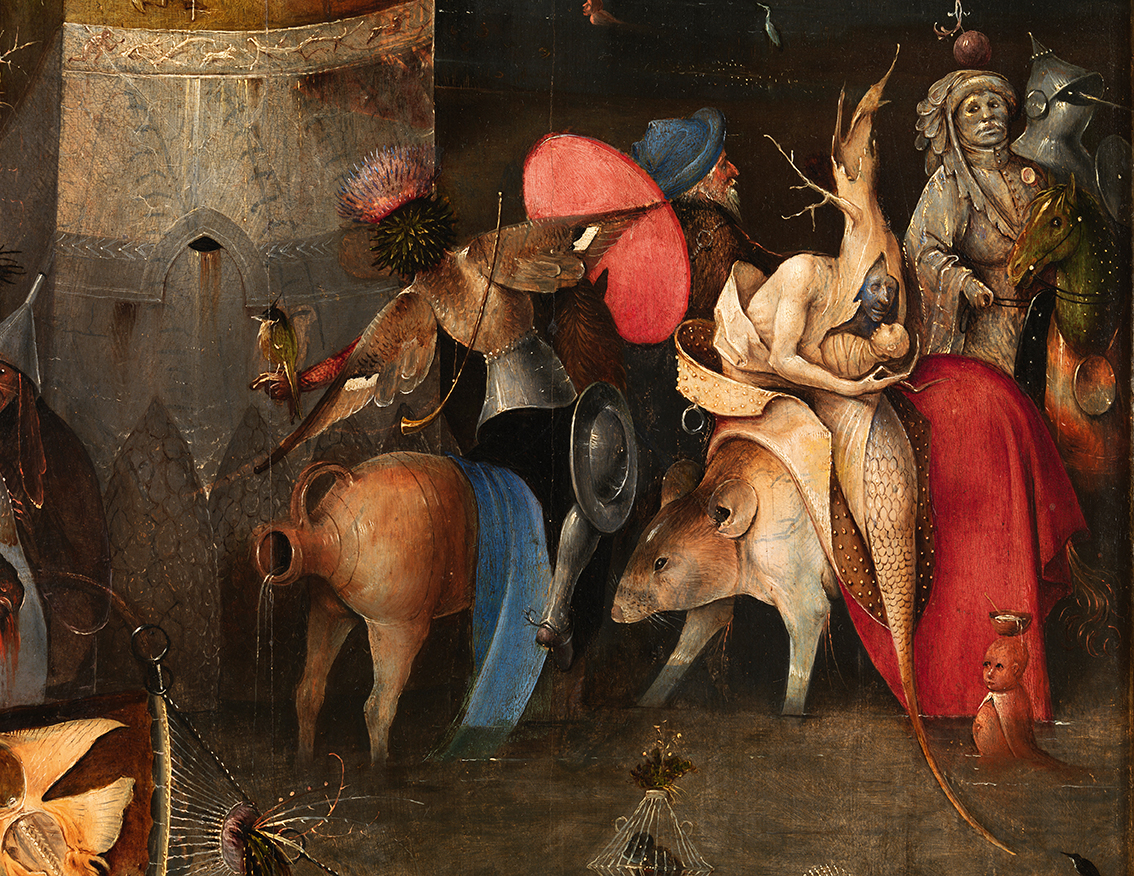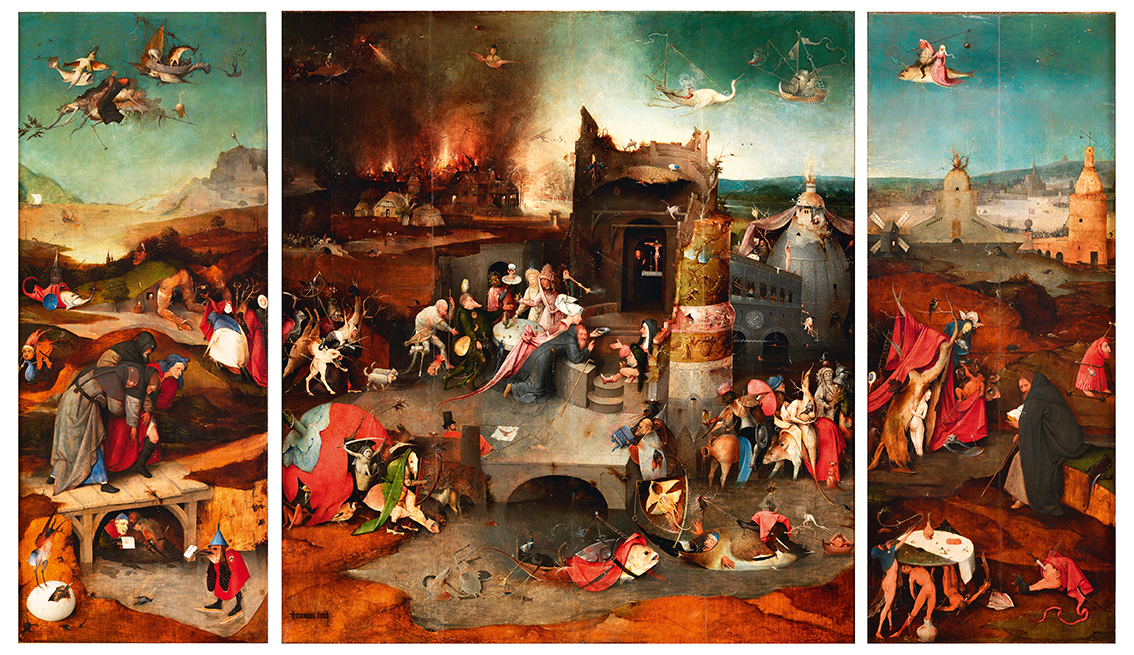HYERONYMUS BOSCH: 🦕️
a different renaissance
Hieronymus Bosch, born in the city of Hertogenbosch was a Dutch/Flemish painter who lived in the 15th and 16th centuries. He was a highly original and imaginative artist known for his surreal and fantastical imagery, usually depicting religious and moral scenes, such as sin, hell and the afterlife. His paintings are often characterized by highly detailed, fantastical landscapes and vivid, almost nightmarish imagery. Despite the enigmatic and often disturbing nature of his work, Bosch's paintings have continued to inspire and influence generations of artists and have been the subject of numerous exhibitions and critical studies.
![]()
Bosch is considered one of the most important and innovative painters of the Northern Renaissance, and his work has been widely acclaimed for its ingenious and dream-like qualities, depicting monsters, demons, and mythical creatures. It is important to note that Bosch lived in an era where sin and hell where a source of anxiety amongst the masses, influencing other artists, such as Dante in his Divine Comedy. Writing and painting, of the purest forms of self-expression, where used as a channel and form of catharsis.
BOSCH. EL BOSCO HIERONYMUS
![]()
Bosch's recurring interconnected themes are still relevant today, some of these themes are:
1. The afterlife and Hell
As before-mentioned, he is particularly known for his depictions of the afterlife and Hell, often filled with torment and punishment for sin. By juxtaposing good and evil, questions of morality arise.
2. The human condition and morality Bosch often depicted the struggles of humanity in his paintings, exploring vices and temptations as a warning to viewers.
3. The fantastical
Bosch's paintings are filled with imaginative and dream-like imagery, including mythical creatures, demons, and fantastical landscapes. Trying to picture the unknown as a way to gain control over the anxiety of not knowing.
4. Nature
the artist was known for his detailed and precise depictions of nature, including landscapes, plants, and animals. Some of his paintings suggest a deep concern for the environment and the impact of human actions on the natural world. This theme is even more relevant today as environmental issues continue to gain importance and people seek to minimise their impact.
Bosch's paintings continue to captivate audiences today, his imaginative and thought-provoking imagery has made him one of the most important and influential painters of the Northern Renaissance, different to the classical Renaissance of Da Vinci, Caravaggio and Michelango...
p.s: Hieronymus Bosch is one of my favourite artists! I was thrilled to revisit his work at Palazzo Reale in Milan last December. I first encountered his work at the Prado Museum several years ago and was immediately drawn to his unique style. The brilliant color palette, meticulous attention to detail, and imagination depicted in his pieces always strike me! Understanding the time period in which he lived, gives one a broader understanding of his work, and highlights the recurring theme that fear of the unknown is a universal human element. Will we ever break this pattern of thought? Perhaps living in the now and reaching internal peace is the answer...
Until next time,
Cris




